The DOL Laser Sources group has been working for several years on the development of new fiber laser sources emitting directly at the 3 µm wavelength. This research is part of national projects (notably the BISCOT project, funded by ANR) involving several academic and industrial partners: XLIM (Limoges), Thales Research & Technology (Palaiseau), Novae (Limoges), III-V Lab (Palaiseau) and CORIA of course.
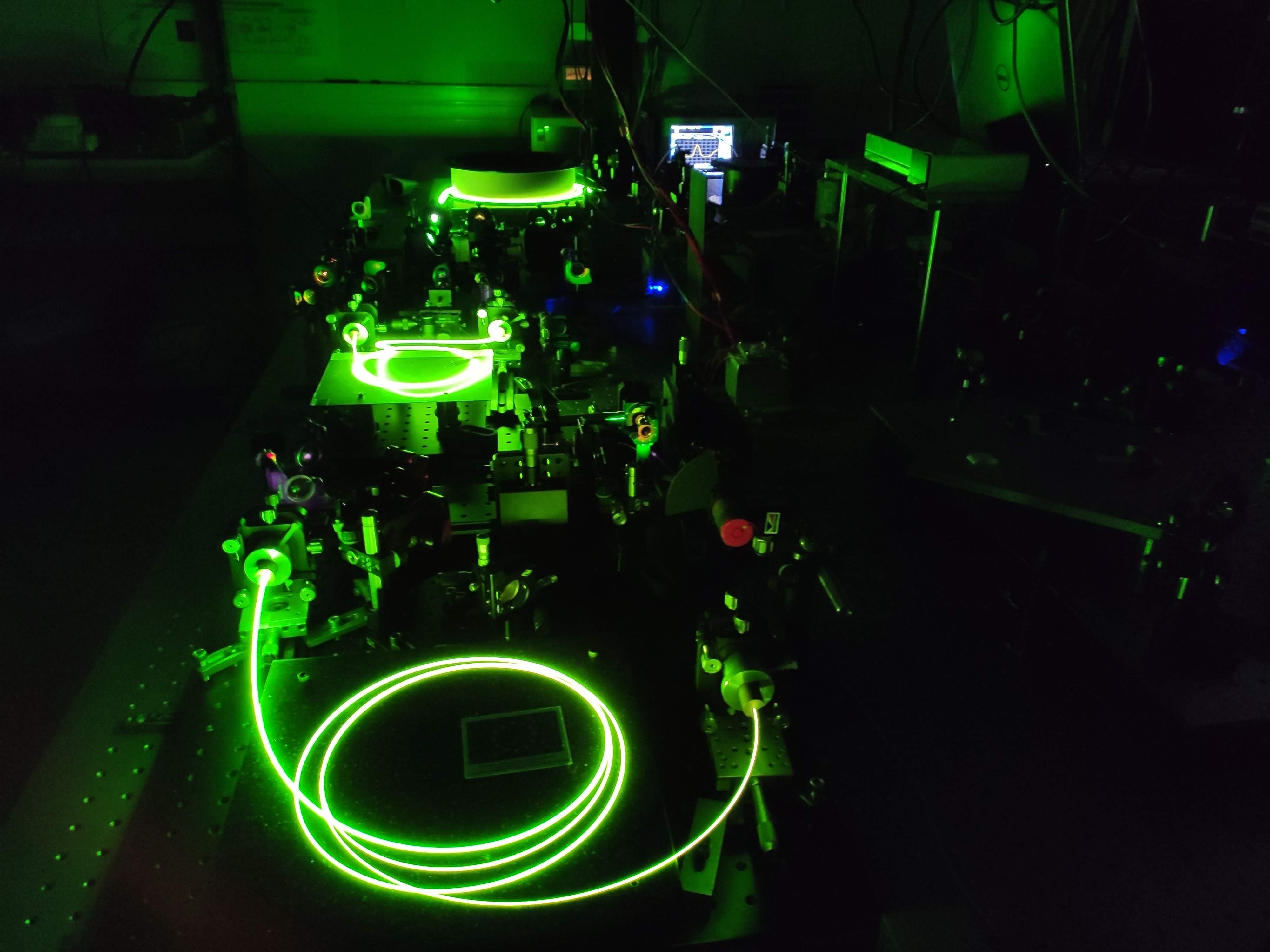
Our amplification chain (MOPA) consists of a femtosecond oscillator emitting at 2.8 µm, a preamplifier and a power amplifier with a Raman shift towards 3 µm.
The soliton self-frequency shift (SSFS) concept can be extended to longer wavelengths by exploiting germanium or fluoride glass fibers. However, this approach does not always allow to control the pulse duration and the energies produced are limited to a few nanojoules. A complementary approach consists in using erbium or thulium doped fluoride glass fiber laser sources emitting around 3 µm. Significant progress has been made in recent years on the realization of high-performance oscillators and amplifiers using ZBLAN fibers. A typical example of a fiber mode locked oscillator emitting at 2.8 µm is shown in the picture opposite. It consists of a ring cavity comprising a double-clad ZBLAN fiber with an erbium-doped core and polarization control elements to exploit the nonlinear polarization evolution mechanism (NPE) for the initiation and stabilization of the pulse regime. The fiber is clad-pumped by a multimode diode at 980 nm. The mode locking can be initiated by saturable semiconductor or graphene absorbers but the best performance in terms of duration and stability is obtained by exploiting the NPE mechanism. Sub-300fs pulses of a few nanojoules of energy are usually produced by our system.
The direct amplification of these pulses allows to reach a few watts of average power with pulses of a few hundred femtoseconds. For energies above 20 nJ, non-linear effects become preponderant and we observe the formation of a soliton by spectral self-frequency shift by Raman effect, allowing us to reach a wavelength of about 3 µm.
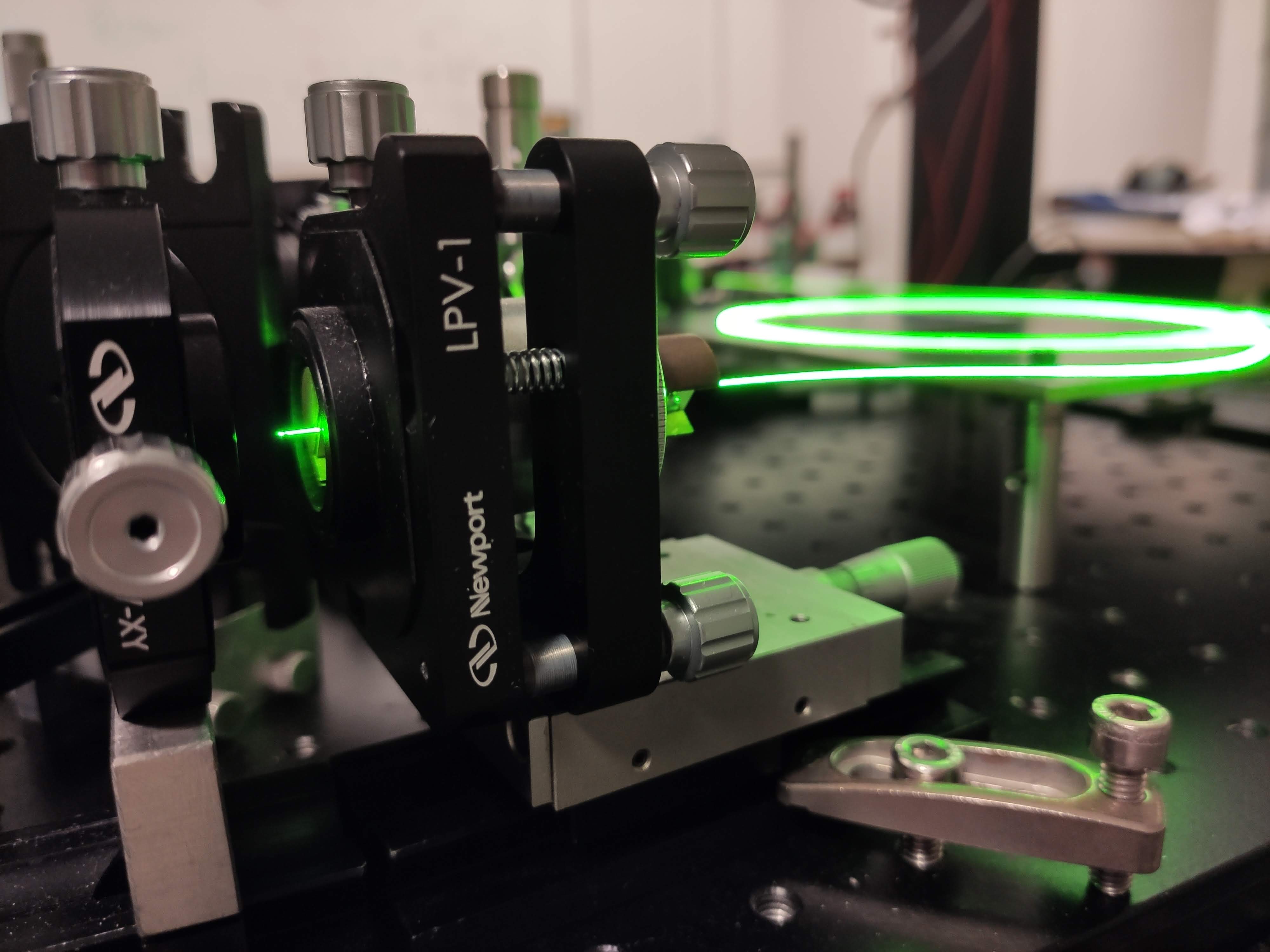
Pump injection in the oscillator
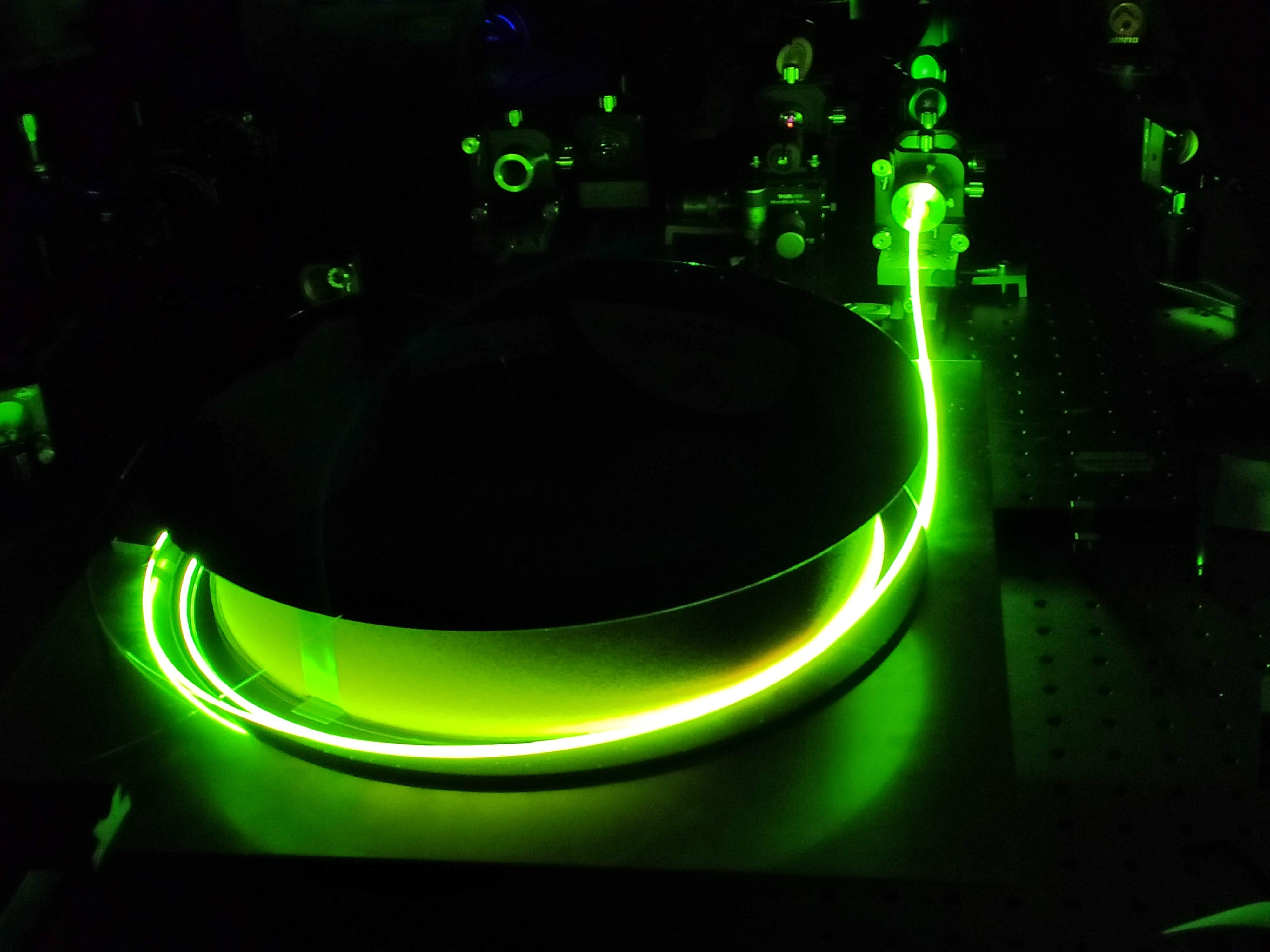
Fluoride fiber amplifier
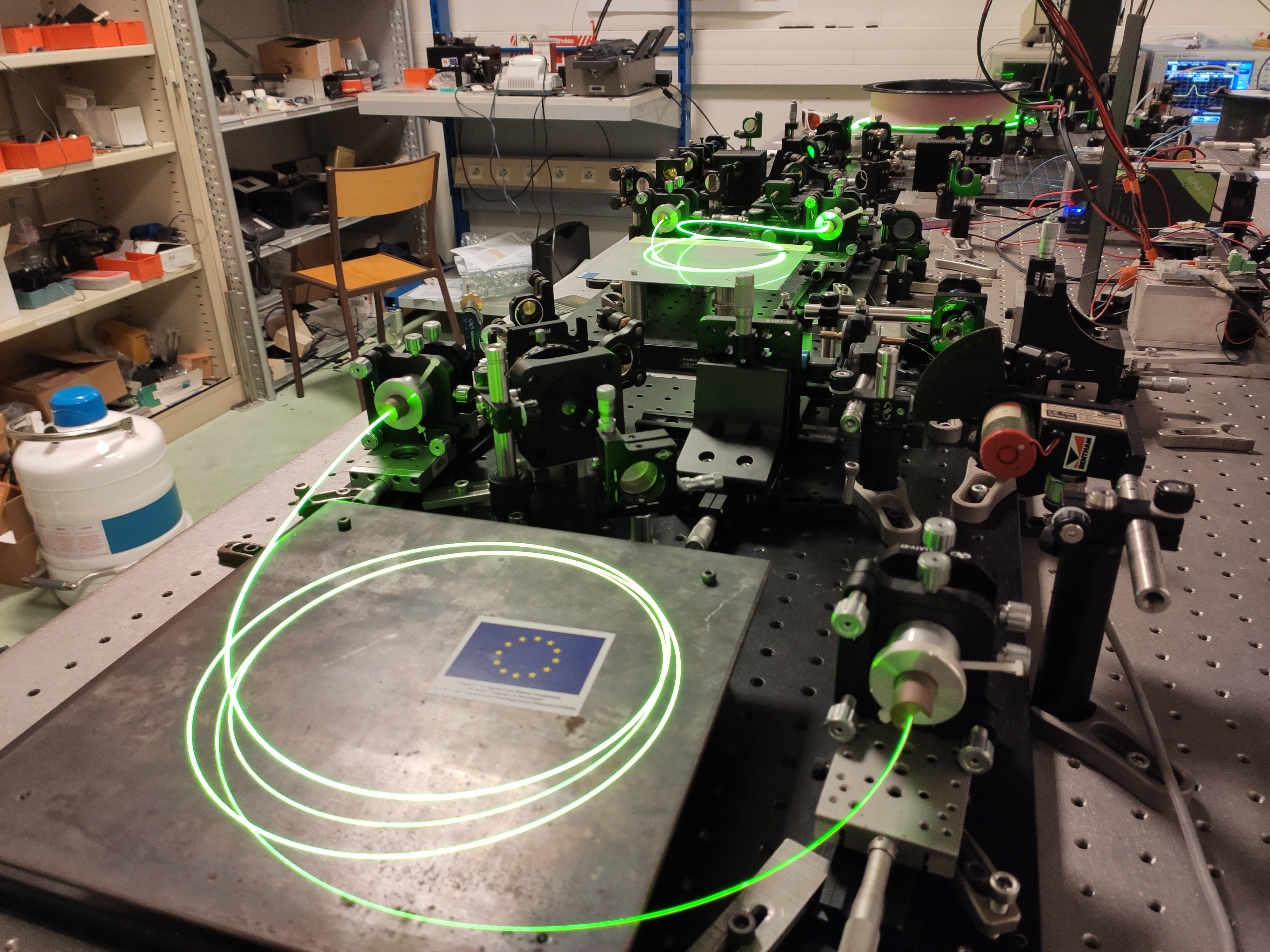
Amplification chain
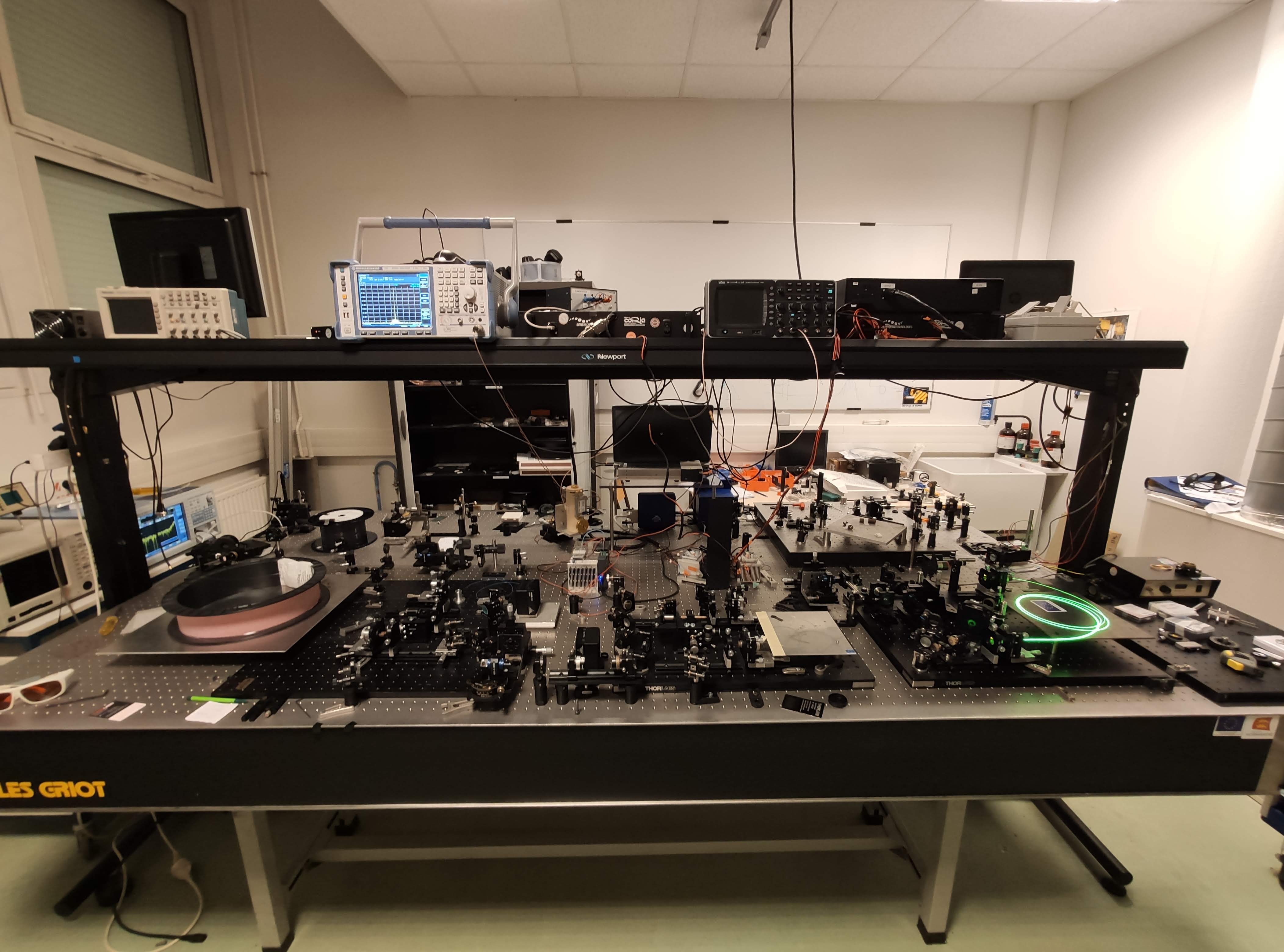
Whole setup





